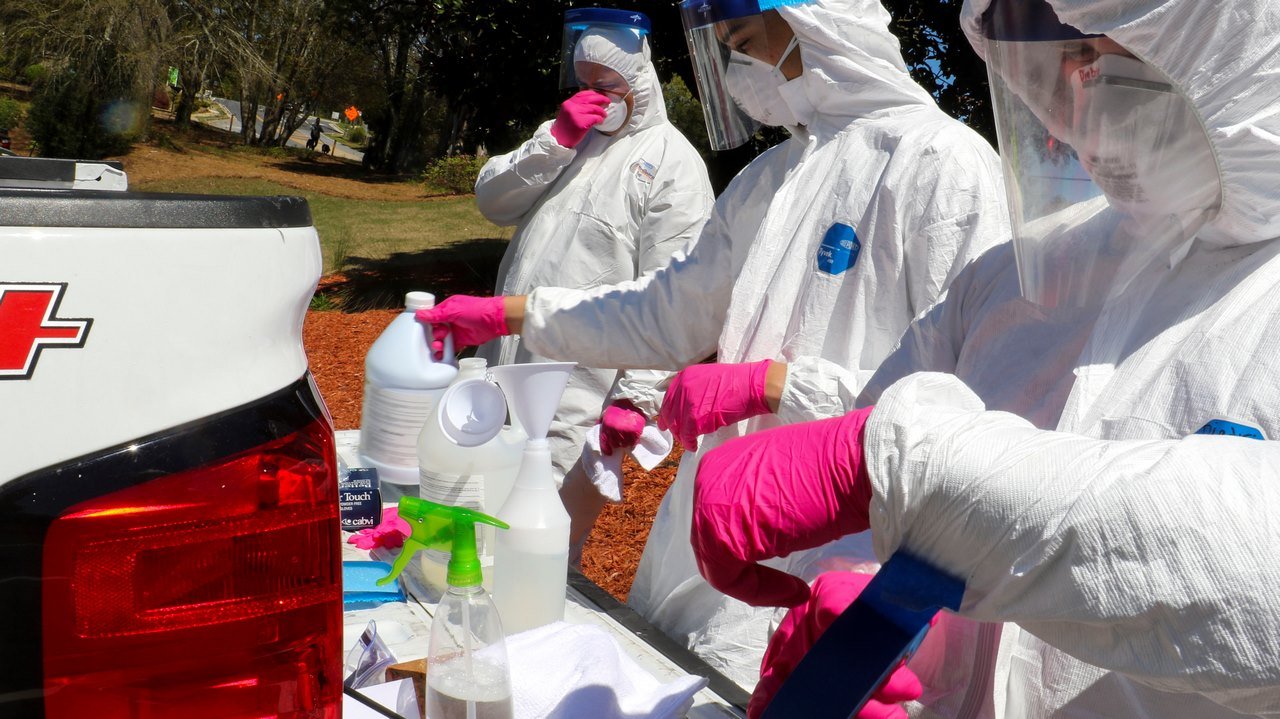Table of Contents Show
In this “new normal” all kinds of new terms and words are being thrown around that most of us have never heard before.
Decontamination cleaning refers to the process of the deep, thorough cleaning of places or objects that are or may be contaminated with toxic chemicals, industrial waste, bacterial or viral infection, and other similar hazards.
It is an in-depth form of purification that involves a range of techniques, based on scientific research.
A number of extensive processes are involved in decontamination cleaning to ensure maximum purity and cleanliness.

What are the Different Types Of Decontamination?
Decontamination cleaning is not solely restricted to one method, because different techniques are used depending on the relevant contamination.
Different types of decontamination include:
- Environmental Decontamination
- Human Decontamination
- Dry Decontamination
- Soil Decontamination
- Groundwater Decontamination
Environmental Decontamination
The Environmental Protection Agency has a set of rules to be followed during environmental decontamination.
It consists of several practices, including improvement of the quality of soil, sediments, and bodies of water.
Human Decontamination
The human body is vulnerable to radioactive and chemical contamination, especially during emergencies or spills.
The accumulation of toxic substances in the human body will eventually prove fatal if action is not taken. Therefore, immediate decontamination is critical.
Dry Decontamination
In regions where the climate is very cold, dry decontamination is most often used. This process does not involve water, using specific chemicals instead.
Soil Decontamination
Soil contamination most commonly occurs due to industrial or agricultural activity in the surrounding area.
This can happen if industrial waste and agricultural pollution are not properly regulated.
It is imperative to restore the initial composition of the soil with the aid of decontamination processes.
Read Also:
Groundwater Decontamination
Since a significant proportion of our global potable water is sourced from groundwater reserves, it is important to ensure groundwater does not become contaminated.
Therefore, governments must carry out the process of groundwater decontamination at regular intervals to ensure that the quality of the water is not compromised at all.
Different Decontamination Cleaning Processes
Decontamination cleaning is not a one-step process. It includes different steps that have to be carried out in a sequential manner to yield the best results.
Decontamination cleaning requires specialist knowledge, so it is best to hire professionals such as phsinterclean.co.uk rather than attempting to manage this yourself.
Next, we’ll take a look at the key steps involved in decontamination cleaning, starting with sterilization.
Sterilization
When an object or surface has been sterilized, this means that all microbes, germs, and bacteria have been eliminated.
Sterilization can include a diverse range of methods that include:
- Plasma
- Ozone
- Ethylene Oxide Gas
- Hydrogen Peroxide Gas
- Radiation
- Heat
When these methods are properly used by professionals, the entire surface will be free of microbes or harmful pathogens.
Autoclaving
When steam is used in the process of sterilization, this is known as autoclaving. High temperatures are generated in a designated chamber which immediately kills or eliminates any pathogens, microorganisms, or unwanted contaminants.
This method is most commonly used to clean lab equipment and other glassware.
Disinfection
Disinfection the use of liquid chemicals that effectively sanitize an object or surface. However, most types of disinfection will not remove bacteria present on a surface, although is capable of removing many other kinds of pathogens that may be present on the surface or object.
Disinfection can be broken down into:
- High-Level Disinfection
- Intermediate-Level Disinfection
- Low-Level Disinfection
As the names suggest, these different types of disinfection methods have different levels of efficacy and so are used according to the degree of contamination.
Regular Cleaning
Regular cleaning methods that you may use in your home or office can also play a part in decontamination cleaning.
Some impurities can be removed with the use of standard detergents and cleaning products.
Rigorous scrubbing may also be used to eliminate bacteria, viruses, and other microbes as well as remove grime.
Cleaning is very effective in removing particle impurities such as soil or organic components. This can also be used as a precursor step to disinfection or sterilization.
Antisepsis
This method is generally used on the skin as part of human decontamination cleaning.
When the skin or fur of humans or animals is exposed to harmful reagents, antisepsis is the go-to method to address the issue.
The use of germicide is the main factor that makes this method of decontamination cleaning effective.
This type of solution is applied over the skin to remove the chemicals or other contaminants.
Wrapping up
There is no one-size-fits-all solution when it comes to decontamination. There are many different contaminants that can be hazardous to people and damaging to objects and surfaces, ranging from bacteria and viruses to chemicals and pollutants.
The appropriate method and level of decontamination cleaning will depend on the situation and issue you are dealing with.
Above all else, it is essential to take decontamination seriously. So if in doubt, always consult with the experts!










